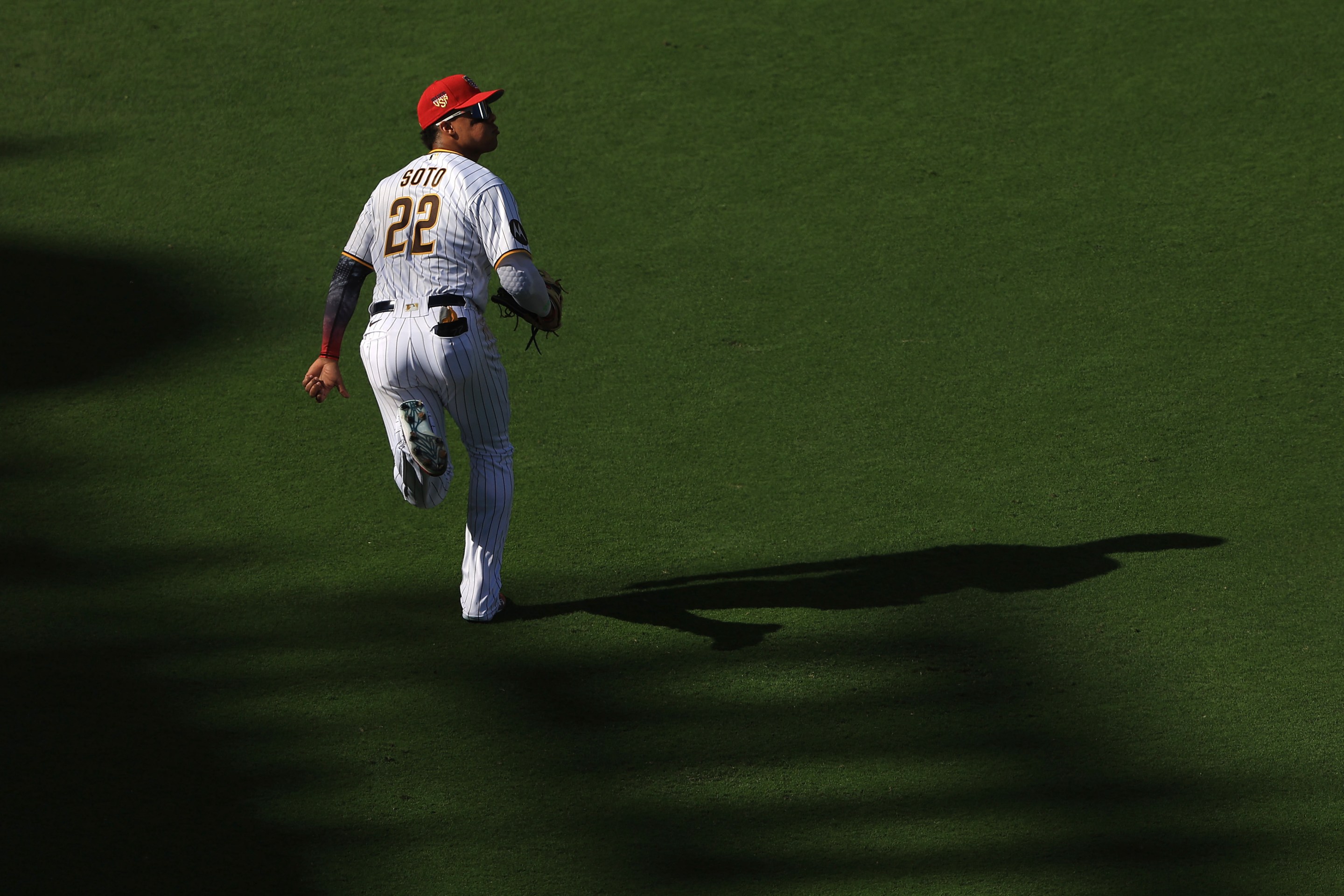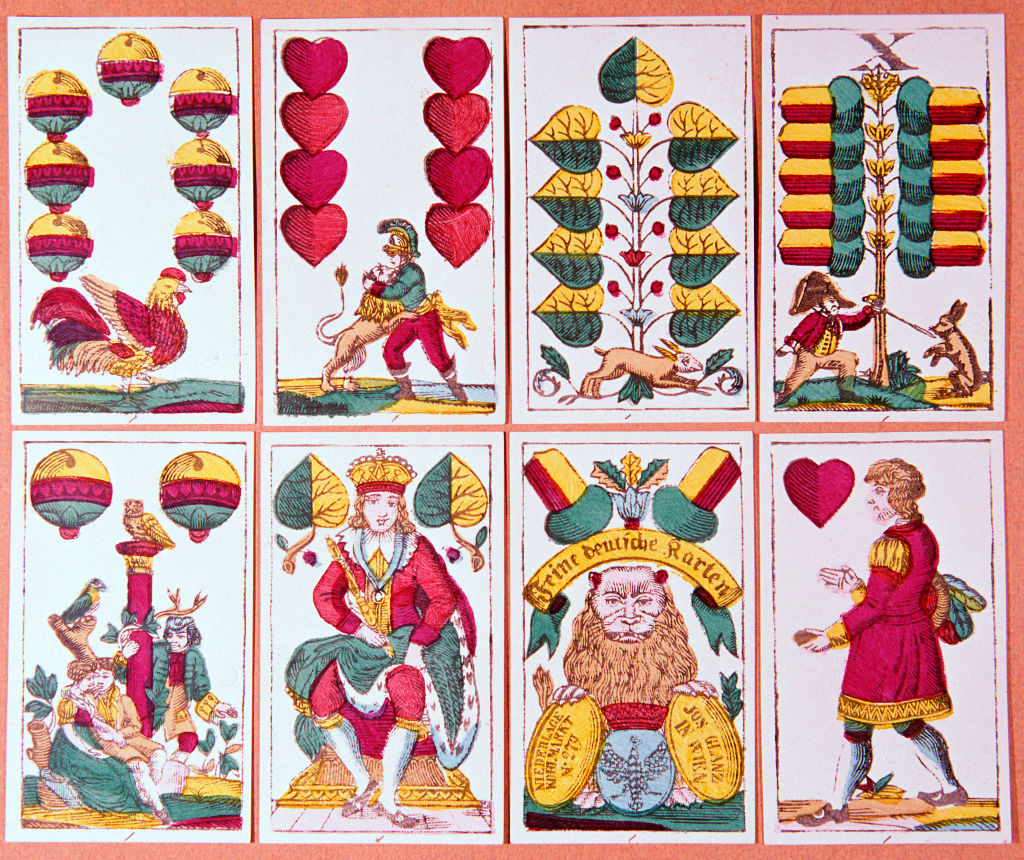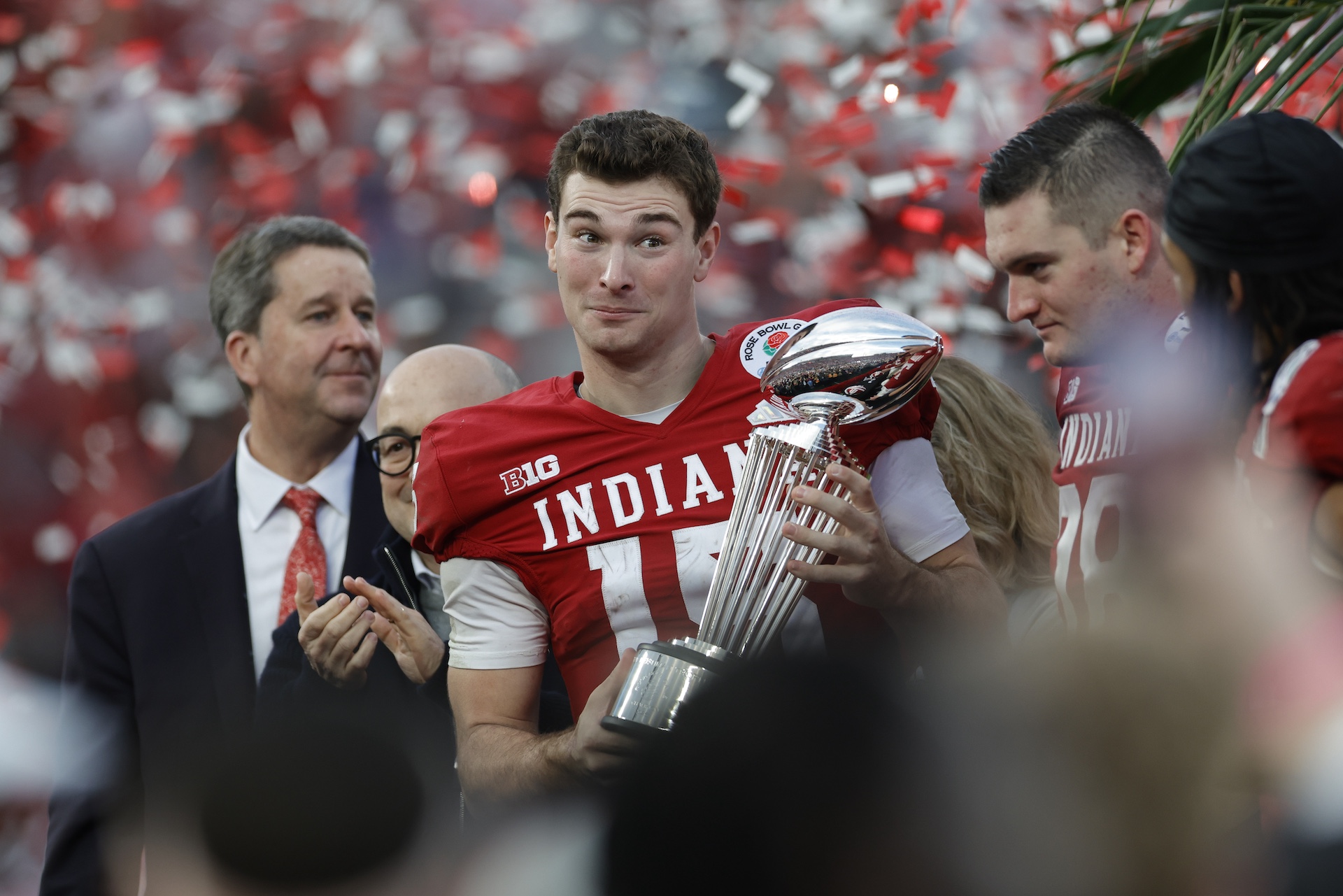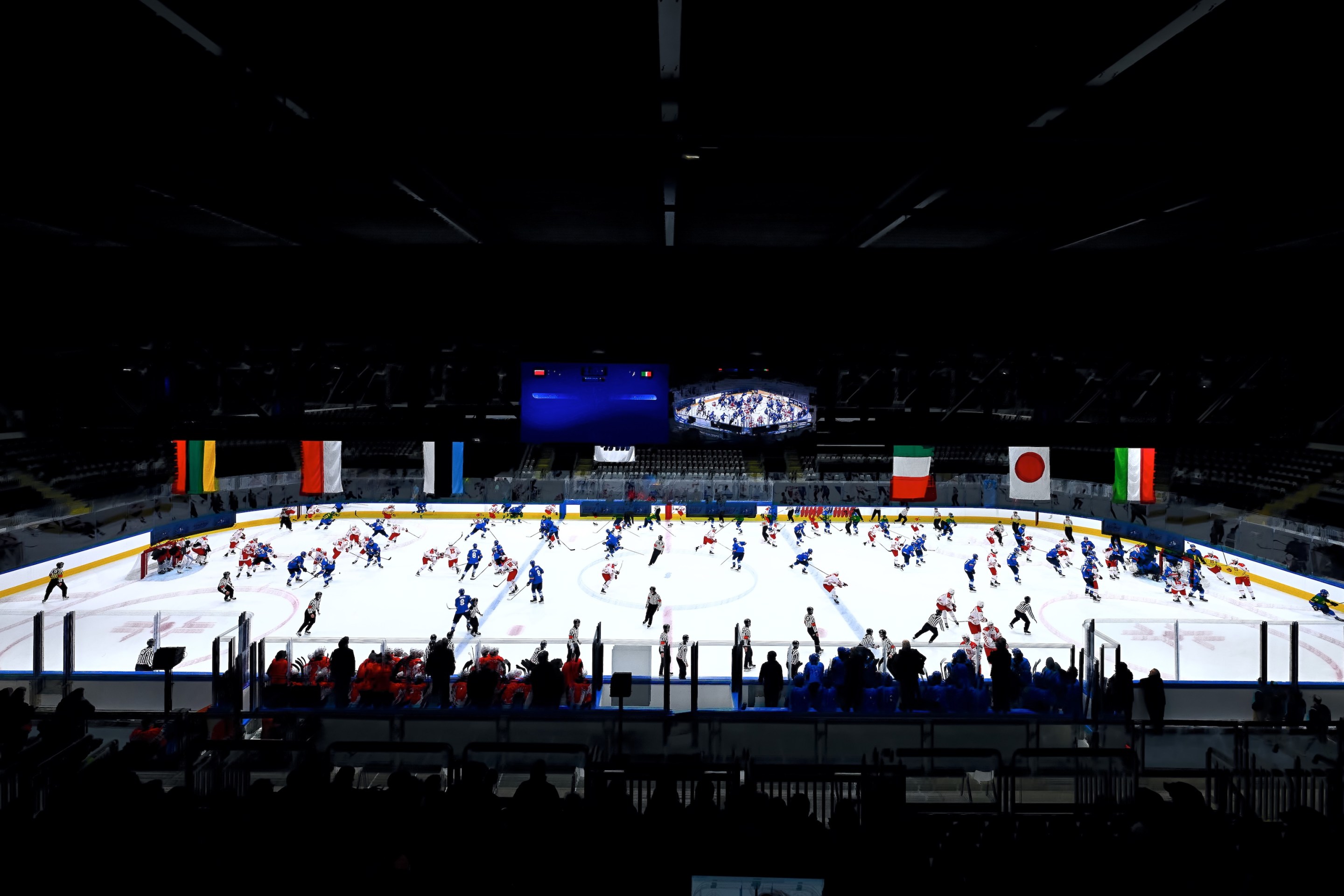This is not about Kyle Schwarber. Well, it kind of is, in the sense that all conversation about poor outfield defense inevitably comes back to Kyle Schwarber. But, no, this time it's specifically about Juan Soto, who went 3-for-15 with two walks against the Phillies this past weekend. It isn't a great stat line, but he did hit a two-run homer to really drive home a Padres win. The least we can do is take a look before we get into the rest of it.
A fun perk of the Statcast era is that you can know the probability that a catch would be made, accounting for direction and a ball's hang time and distance from the defender. Soto only had one error over the course of the series, but he had three missed balls with an 85-percent or greater catch probability. Sidenote: Statcast appears to bin catch probability, so the values will either be 99 percent—a basically guaranteed play that will certainly never be dropped—or fall into neat intervals of five percent. No 83 percent or 97 percent, or what have you.
Here the plays are, in increasing order of ignominy:
3. July 15, 2023: 85 percent catch probability
Soto ranks as the sixth-worst defensive left-fielder and 11th-worst outfielder on Statcast's range leaderboard, but he actually gets an average jump on the ball, unlike his similarly defensively capable peers, such as Andrew Benintendi, Jurickson Profar, and Kyle Schwarber, whom this is not about.
Break that jump a little bit more into reaction time and route, and you can see where it comes from: Soto reacts quickly but takes an inefficient route to the ball. And while Soto's pure sprint speed isn't terrible in comparison to the league average, which is laden with catchers and first basemen and designated hitters and so on, the median left fielder tends to be a fair bit faster, making Soto the 10th-slowest left fielder in MLB. Who is the slowest? Please do not ask.
So combine a great reaction-time jump with not-amazing-speed and a slightly warped route, and you miss a play that could've looked routine in the hands of another outfielder. This was ruled a hit, which was good for Brandon Marsh, since he ended up with a double and two RBI if you're really into optimism; it was also not terrible for Soto thanks to the preservation work done for his fielding percentage—so long as you ignore those two RBI.
2. July 16, 2023: 95 percent catch probability
Statcast factors in whether or not an outfielder has to go backwards or make a play at the wall when calculating catch probability. (My rapid-fire guess from looking at the fielding breakdown visual on player profiles is that it pushes the play down a bin—that is, if the catch probability was originally 99 percent, then it would become a 95 percent, a 95 percent would become a 90 percent, and so on.) Whether or not Statcast makes an entirely fair judgment on the final catch probability is up to you—plays at the wall always feel impressive, at least to a plebeian like me, but you'd still expect a good defender to make them reliably if they aren't going to be home runs, especially if the ball has high hang time.
Soto overshoots the ball, and ends up having to awkwardly reach back over his head to try to get it. It barely clips his glove and ends up rolling back off the warning track. Marsh is given a triple, though Soto gets a decent throw in there after getting back up off the ground.
The takeaway here is that Brandon Marsh is Juan Soto's kryptonite.
1. July 14, 2023: 99 percent catch probability
This was all lead-up to a Big Oopsie, which is the technical term for missing a ball with a 99-percent catch probability. Most of the time, these are just flat-out errors: dropped balls, miscommunications, the like. It's pretty special to have one of these, remarkable if it's somehow made to look like a difficult play, and astounding to have three on a season alone.
Well, good thing this was only Soto's first Big Oopsie of the season! It came in the half-inning immediately following Soto's homer and was ruled an error, probably because it hits his glove. But it isn't your vanilla dropped ball. Even with the high hang time of the ball and relatively low travel distance, Soto's route-running leads him to stop, once again, further left-field of the ball. By the time he realizes where the ball is going to land, he has to once again extend his arm awkwardly across his body to try to catch it, to prosaic results.
Statcast may say 99-percent catch probability, but there's also the baby-math way of thinking about it, which is that Soto gave up a run, but he also hit a two-run homer beforehand, and two minus one is still a positive number. As we all know, being able to hit the ball real hard makes up for bad defense.
Video unrelated. You just love to watch a man hit big homers.
Soto hasn't always been terrible defensively, but his total career has been weird. He's been not-so-great this year; compared to last year, it's night and day. Ever since 2018, his defense has done a little wiggle from year to year by pretty much every advanced defensive metric.
Juan Soto Outfield Defense By Year (Statcast OAA / UZR / DRS)
2018 — -6 / -4.2 / -4
2019 — 7 / -0.7 / 2
2020 — -3 / -2.7 / -9
2021 — 4 / 2.2 / -4
2022 — -16 / -2.0 / -2
2023* — -5 / 1.2 / -3
*in progress
On top of that, Statcast recently unveiled a suite of new statistics, including its Fielding Run Value leaderboard. Fielding Run Value essentially combines arm strength with Statcast's pre-existing range metrics (Outs-Above Average) and tells you how many runs a defender saves their team over a given range of games. It's your typical baseball cumulative statistic: positive number good, negative number bad.
And, whoa, ignoring what the Nationals have done to poor Keibert Ruiz this year, Kyle Schwarber is really at the bottom, there, isn't he, with his negative-16 runs saved—but this isn't about Kyle Schwarber. This is about Juan Soto, who may be the sixth-worst defensive left fielder based on range, but whose average-to-above-average arm strength and accuracy bolsters him until he's only 20th. Maybe that doesn't feel like much, but it speaks to the tightness up at the top (or bottom) that these plays add up. After all, Statcast only gives Soto one saved run thanks to his arm, but that's enough.
On the other hand, Kyle Schwarber gets negative-2 runs saved, which doesn't change anything—Gah! This is not about Kyle Schwarber!






